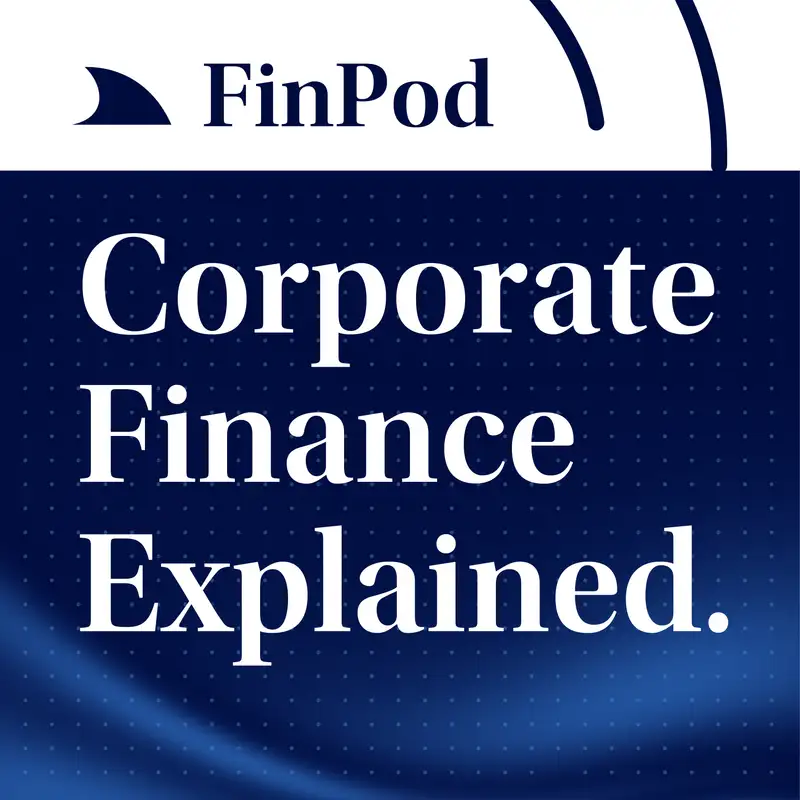Corporate Finance Explained | The Financial Strategies of Subscription-Based Businesses
FinPod: Subscription Economics: Mastering LTV, Churn, and Recurring Revenue
The Subscription Economy has fundamentally reshaped corporate finance, moving the focus from one-time sales to long-term customer relationships. For professionals in FP&A, IR, and Corporate Strategy, understanding this shift is critical for forecasting and valuation.
In this episode of Corporate Finance Explained on FinPod, we break down the unique financial mechanics of recurring revenue, examine key metrics, and explore how the most successful companies manage this model.
The Core Shift: Value & Metrics: The subscription model swaps short-term cash hits for long-term predictability, which investors reward with higher valuation multiples.
The Subscription Economy has fundamentally reshaped corporate finance, moving the focus from one-time sales to long-term customer relationships. For professionals in FP&A, IR, and Corporate Strategy, understanding this shift is critical for forecasting and valuation.
In this episode of Corporate Finance Explained on FinPod, we break down the unique financial mechanics of recurring revenue, examine key metrics, and explore how the most successful companies manage this model.
The Core Shift: Value & Metrics: The subscription model swaps short-term cash hits for long-term predictability, which investors reward with higher valuation multiples.
- The Critical Ratio (LTV:CAC): We break down the relationship between Customer Lifetime Value (LTV) and Customer Acquisition Cost (CAC). Learn why the benchmark is LTV ≥ 3x CAC and the pitfalls of inflating LTV with non-recurring revenue.
- The Accounting Challenge: We explain revenue recognition (ASC 606/IFRS 15) and the concept of Deferred Revenue. Cash is received upfront, but revenue is recognized over time, which can make financial statements appear less profitable during high-growth periods.
- The Cautionary Tale: Analysis of MoviePass reveals the danger of fundamentally broken unit economics, where the cost to serve the customer (CoGS) was higher than the subscription fee, accelerating the path to bankruptcy.
Strategic Playbooks & Success Stories: Successful companies master the mechanics of growth and retention, managing complex P&Ls and investor expectations:
- The Content Giant (Netflix): The challenge of balancing liquidity and leverage while managing billions in content amortization to drive retention and reduce churn (even a half-percent increase means millions in lost ARR).
- The SaaS Pioneer (Salesforce): Leveraging deferred revenue as an interest-free loan and obsessively tracking Net Revenue Retention (NRR), measuring if existing customers increase their spending over time.
- The Strategic Pivot (Adobe): The painful but successful transition from a lumpy license model to the predictable Creative Cloud subscription, which required transparent communication to manage market expectations.
- The Hybrid Model (Peloton, Amazon Prime): Understanding that the high-cost hardware sale is primarily a customer acquisition channel for the much more valuable, low-cost recurring content stream.
The Modern Finance Mandate: Mastering the subscription model requires blending traditional corporate rigor with data science:
- Cohort Analysis: Shifting forecasting models to track groups of customers based on sign-up time, revealing granular insights into renewal rates, upgrades, and churn patterns.
- Proactive Scenario Modeling: Forward-looking planning (FP&A) must run rigorous sensitivity analyses, modeling the impact if CAC jumps 15% or if churn spikes, to prepare leadership for potential volatility.
- Communication is Strategy: Clearly articulating metrics like NRR and the path for LTV expansion to maintain premium public market valuations.

